Overtourism in Pamukkale: Is it Worth Visiting Turkey’s Cotton Castle?
Pamukkale is one of the most spectacular natural landscapes in the world. How can we ensure that it is preserved for generations to come?
Pamukkale’s white calcium travertines have been described as “stunning”, “unreal” and “otherworldly”, and the name literally means “cotton castle” in Turkish. Pamukkale is undoubtedly one of the most spectacular natural landscapes in the world and one of the most popular tourist destinations in Turkey, attracting more than 2 million visitors each year.
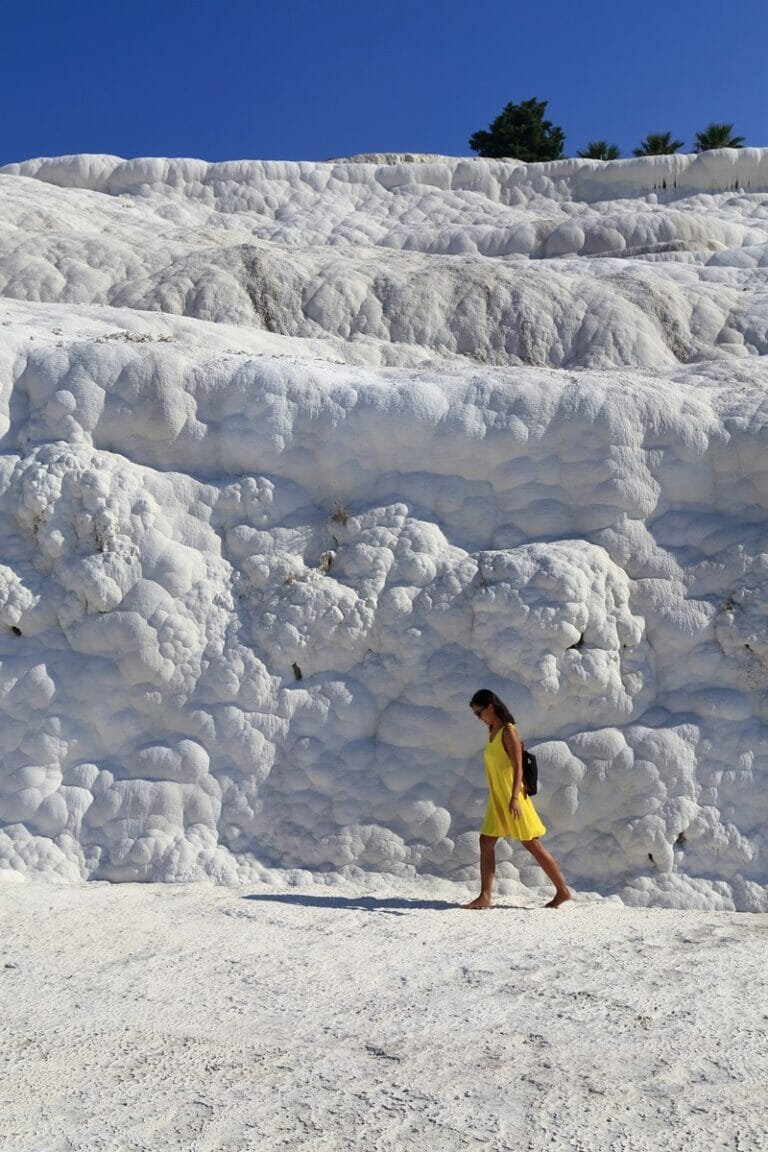
Located in the inland province of Denizli, Pamukkale in Turkey is located nearby the spa town of Hierapolis, founded by the kings of Pergamom at the end of the 2nd century B.C.
It has a rich history as Hieropolis was once an important religious epicenter following the acceptance of Christianity by the emperor Constantine and his establishment of Constantinople (modern Istanbul) in 330 A.D.
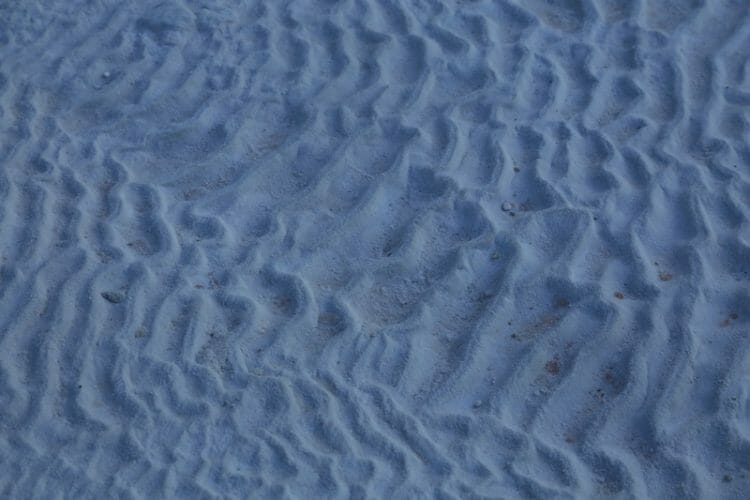
Today, remains of the ancient city include baths, temple ruins, a necropolis and a massive theatre. Pamukkale was formed when a spring with a high content of calcium bicarbonate cascaded over the edge of the mountain cliff, which cooled and hardened leaving white-coloured calcium deposits and aquamarine mineral-rich water.

The calcium-filled travertines cascade down nearly 200 metres and resemble frozen waterfalls, pooling down into shallow natural thermal spring basins – together with the ancient city and ruins of Hieropolis, Pamukkale was inscribed as a World Heritage Site by UNESCO in 1988.
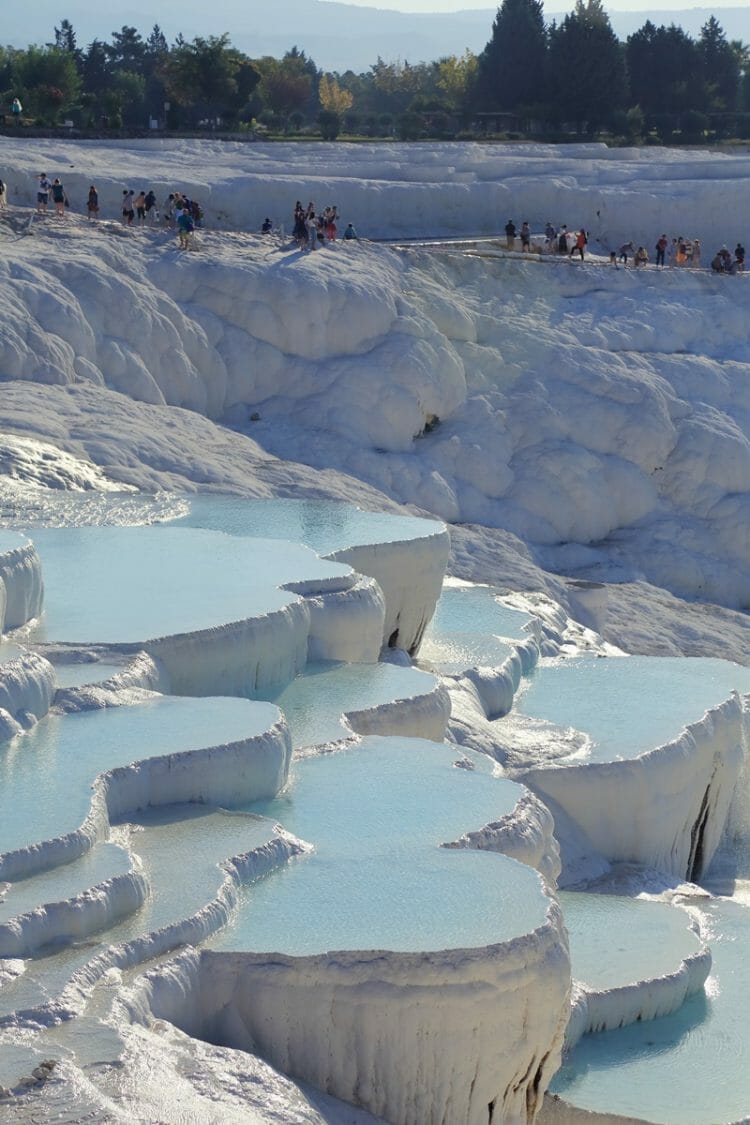
You can see why millions of visitors flock to the Pamukkale thermal pools for the opportunity to bathe in the warm natural spring and why we absolutely had to add Pamukkale to our 2 week Turkey itinerary. But it wasn’t quite what we expected. Here’s what you need to know to plan your Pamukkale trip.
How to get to Pamukkale
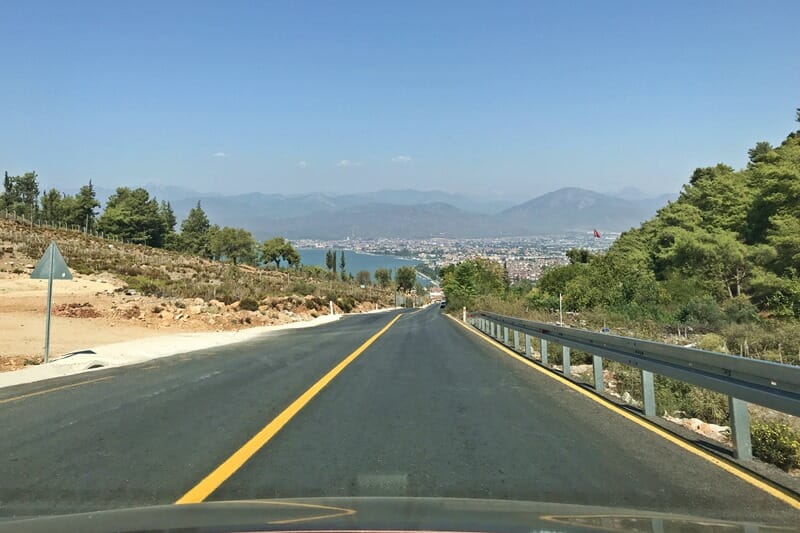
Where is Pamukkale? Pamukkale is located in the Denizli Province. The closest airport to Pamukkale is in Denizli (airport code: DNZ), and the drive from Denizli to Pamukkale will take you approximately 45 minutes to an hour.
You can also fly into Izmir or Bodrum and drive to Pamukkale. We drove over from Fethiye and it took us about 6 hours with a few stops. We rented a Hyundai i20 car from Alamo at Izmir Airport and they were extremely helpful – it cost us only US$110 or 100 Euros for 8 days and tolls are virtually non-existent in Turkey.
Looking for the best prices for rental cars around the world? Click here to book your rental car ahead of your trip. Bookings can be cancelled or amended if your plans change!
If you are flying into Izmir or Bodrum, the drive to Pamukkale will take you approximately 3 hours. I don’t recommend visiting Pamukkale via car from Istanbul, as the driving time is nearly 7 hours long each way. Instead, to get from Istanbul to Pamukkale, fly to Denizli, Izmir or Bodrum first. There are several domestic flights from Istanbul each day to each of these airports, and the flight time is approximately 1 hour to 90 minutes long.
Where to stay in Pamukkale

We opted to stay in Pamukkale though it is a small village – many others stay in the main town of Denizli, but we wanted to be able to get to the travertines as early as possible in the morning.
We stayed for 1 night at Bellamaritimo Hotel, a 3-5 minute walk from the travertines. Don’t expect any luxury or boutique hotels in the area – Bellamaritimo is extremely basic but clean, and the rooms are spacious with air conditioning. The bathroom had a good shower with constant hot water, and there is free parking onsite.
It’s worth noting that the hotel does not have an elevator so you will need to carry your suitcase up a few flights of stairs. Click here to see availability and current rates at Bellamaritimo Hotel, or head on over here for some other hotel options near the Pamukkale travertines.
Looking for more Pamukkale hotel options? Based on extensive research, I would also personally consider the following properties:
Venus Suite Hotel – located a 15-minute walk from the Pamukkale ticket office or you can take their free town transfer service. Reviewers say that the hotel is very clean and that the staff are incredibly helpful. Click here to see availability and rates at Venus Suite Hotel.
Hotel Pamukkale – just a stone’s throw from the south gate, Hotel Pamukkale is another family-run hotel in the area that is highly rated for a short stay. Reviewers say that the owner is warm and helpful, and that the location is excellent. Click here to see availability and rates at Hotel Pamukkale.
The town of Pamukkale has very limited accommodation options and this is probably your best bet for a 1-2 night stay in the area. Many people plan a day trip to Pamukkale from Bodrum or Izmir, but I would recommend spending 1 night in Pamukkale so that you can visit the travertines early in the morning.
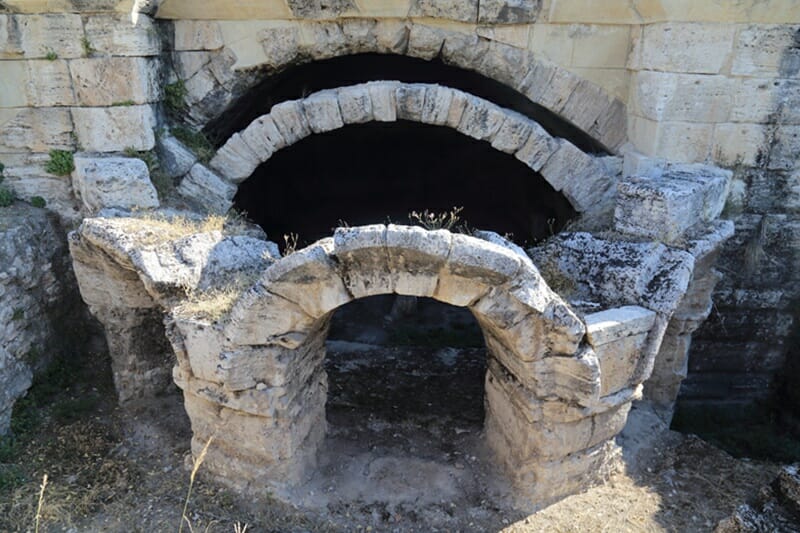
Only spend a maximum of 2 nights in Pamukkale if you are venturing out to see the ruins of Aphrodisias or more of the other ancient cities in the area. We had allotted 3 nights to Pamukkale and ended up cutting our time here short – instead, we moved onto the charming Mediterranean town of Alaçatı after just 1 day in Pamukkale.
Important information about hotel booking in Turkey: You can not book hotels in Turkey using Booking.com when you are already in Turkey, as it has been blocked by the Turkish government (so has Wikipedia, for that matter, and they’re looking to extend the ban to other websites including AirBnB and Expedia). Instead, make sure you book hotels for your stay in Turkey before your trip, or use Hotels.com for any last-minute hotel bookings that you need to make when you are already in the country.
Leaving it until the last minute to book your accommodation in Turkey is a travel mistake you should avoid making – head on over here to read more about what not to do in Turkey!
Tips For Visiting Pamukkale

Best time to visit Pamukkale: In general, tourism numbers are far lower than they have historically been, so in my opinion there is no “bad” time to visit Turkey if you want to avoid tourist crowds. However, the weather is more pleasant from April to about October/November, after which it can get bitterly cold.
The Pamukkale travertines open at 6:30 AM every day, though the timing may change in the winter months. Either visit first thing in the morning, or late in the afternoon to avoid the majority of the tourist crowds. However, be aware that even if you visit early in the morning the crowds can still be fairly unbearable during the peak season.

What to see at Pamukkale: Many people don’t realize that behind the Pamukkale terraced pools are the sprawling Hieropolis ruins and museum – make sure you also explore the archaeological treasures of the ancient city!

How much time to spend at Pamukkale: Plan to spend around 3-4 hours at the travertines, Hieropolis ruins and museum. You can get between the various landmarks easily on foot – the walk from the travertines to the amphitheatre will take no longer than 10 minutes or so.
Pamukkale entrance: Use the south entrance closest to the village which opens earlier than the north entrance – there is parking available to the left of the entrance if you are driving.
Pamukkale ticket and entry fee: Entry costs 700 TL as of 2023 (pricing subject to change) but you can use your Museum Pass Turkey. Entry into the Hieropolis Museum costs extra but you can also use your Museum Pass here. There is a separate fee to swim in Cleopatra’s Pool.
What to bring to Pamukkale: Bring a bag to carry your shoes in as footwear isn’t allowed to be worn on the terraces, and wear some sunglasses as the travertines are somewhat reflective and the sun glare can be intense. Bring your own towel if you plan on going for a dip.
Visiting Pamukkale
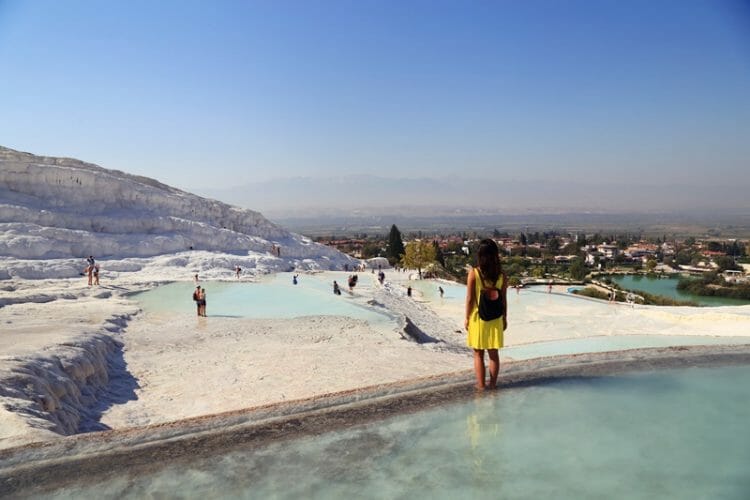
Our experience in Pamukkale left me feeling conflicted. After a glorious few days in Fethiye along Turkey’s Turquoise Coast, we eagerly embarked on a 6-hour drive towards Pamukkale in western Turkey to see the dreamy travertines.

We checked into Bellamaritimo Hotel in the small town of Pamukkale in the early evening, and set out for a quick dinner before turning in so that we could be the first ones to arrive when the gates opened at Pamukkale in the morning.

I woke up feeling full of anticipation and excitement, and that’s saying a lot because I’m not exactly a morning person. The sun had barely made it over the mountain, and the Pamukkale travertines were largely still in the shade. With a slight chill in the air, we swiped our Museum Card Turkey to step foot onto the snowy white terraces – the swirling limestone deposits in the mineral water was such a sight to behold, and it wasn’t long before we made it to the main terraces.

But in what feels like the blink of an eye, the entire mountain was full of people. It took no longer than 20 minutes for Pamukkale to get busy and full of swarming visitors.
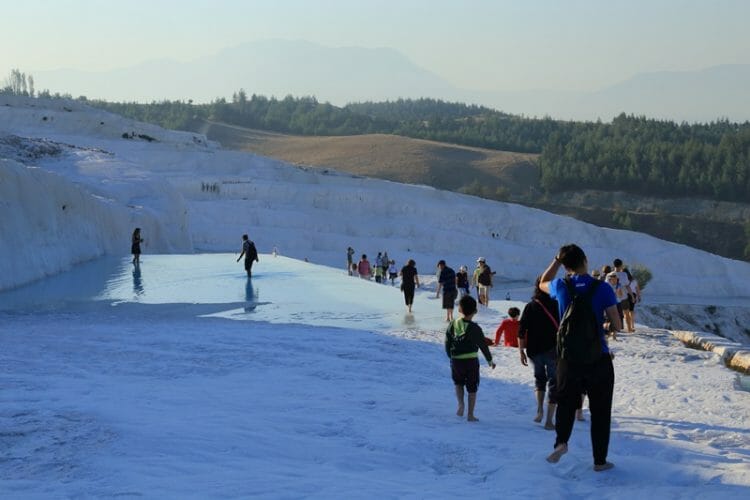
During our time there, I can only describe the experience as frustrating, as hordes of people flocked to the Pamukkale travertine and thermal pools in speedos and bikinis, the majority of them holding their very own Instagram photoshoot, or blasting techno music from their phones.
The vendors there have caught on, and club music with heart-thumping bass can be heard blasting from the shops as early as 9 AM as people clamor for the best photo spots and pose with rented prop parrots.

I had high hopes for Pamukkale and while it is indisputable that the natural wonder of this landmark is breathtaking, the experience was tainted by poorly behaving, inconsiderate fellow visitors. The preservation and conservation of the travertines is at risk due to heavy foot traffic and in fact one of the areas had been cordoned off (see photo above) in an attempt to allow the travertines to recuperate over the next couple of months. The staff were also constantly having to get people to not climb and step on delicate parts of the travertines for that “money shot”.
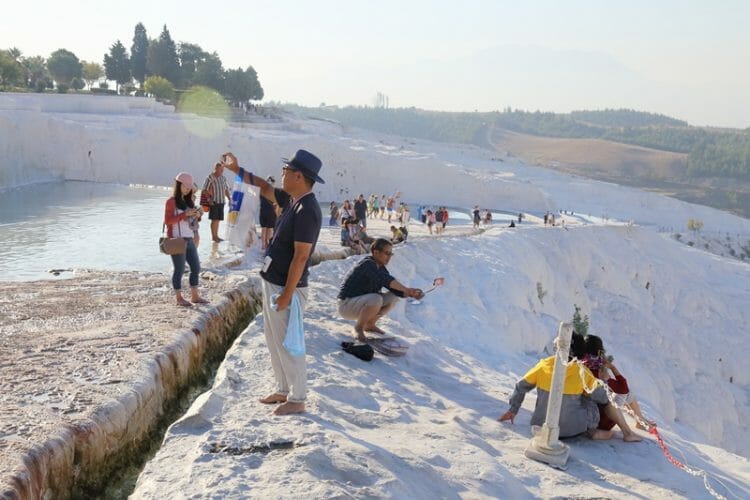
So, is it worth visiting Turkey’s Cotton Castle? To be candid, Pamukkale is the only place in Turkey that I was itching to get away from, and it all comes down to the ridiculous crowds of people. I traveled all this way to see the beautiful terraced Pamukkale pools – I wasn’t exactly looking to have my eyes assaulted at 9 in the morning by butt cracks and barely-covered crotches.
There’s really not much the authorities can do: the staff do the best they can with limited resources, and visitors simply ignore their instructions or wait until they’re not looking to climb on blocked off sections of the travertines.

Notwithstanding that, the pools of Pamukkale are truly a wondrous natural phenomena, and one that I would recommend that you see with your own eyes at least once in this lifetime. Just make sure you are mentally prepared to face the issue of overtourism in Pamukkale, and that you try to reduce your impact during your visit.
Wondering where to stay in Pamukkale? I recommend checking out Bellamaritimo Hotel, a very short walk from the travertines – this will allow you to be one of the first visitors at Pamukkale in the morning. The owner at Bellamaritimo is very friendly and helpful, and the rooms are basic but spacious with air conditioning. There is free parking onsite if you are self-driving around Turkey. Click here to see availability and current rates at Bellamaritimo Hotel, or head on over here for some other hotel options near the Pamukkale travertines.
Looking for more Pamukkale hotel options? Based on extensive research, I would also personally consider staying at Venus Suite Hotel (a 15-minute walk from the Pamukkale ticket office or you can take their free town transfer service) and Hotel Pamukkale (a family-run hotel in the area that is highly rated for a short stay).
Overtourism in Pamukkale and Turkey
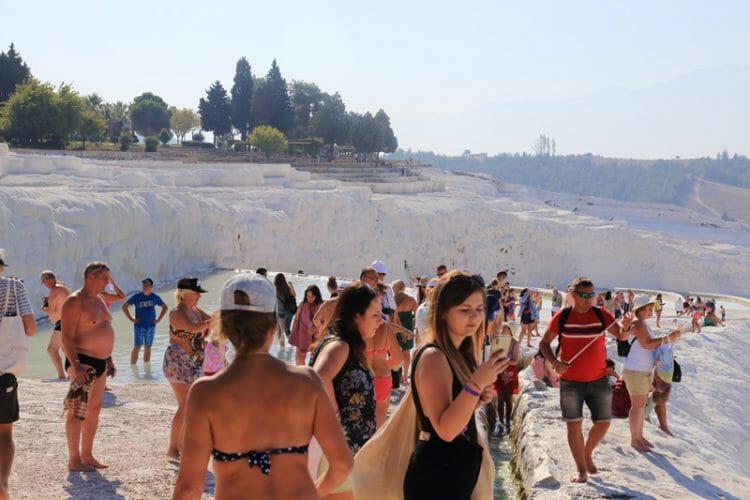
Overtourism is on everyone’s minds these days, with places like Boracay shutting down during the peak season and Venice proposing a “day tripper tax”. Turkey isn’t particularly known for the problem of overtourism, especially since some high profile terrorist events in the past years effectively slashed tourism numbers.
In fact, during our 2 weeks in Turkey, dealing with tourist-heavy crowds was not an issue even in some of Turkey’s most popular tourist destinations including the region of Cappadocia (which is known for its ethereal landscape of hot air balloons at sunrise), or the major city of Istanbul.
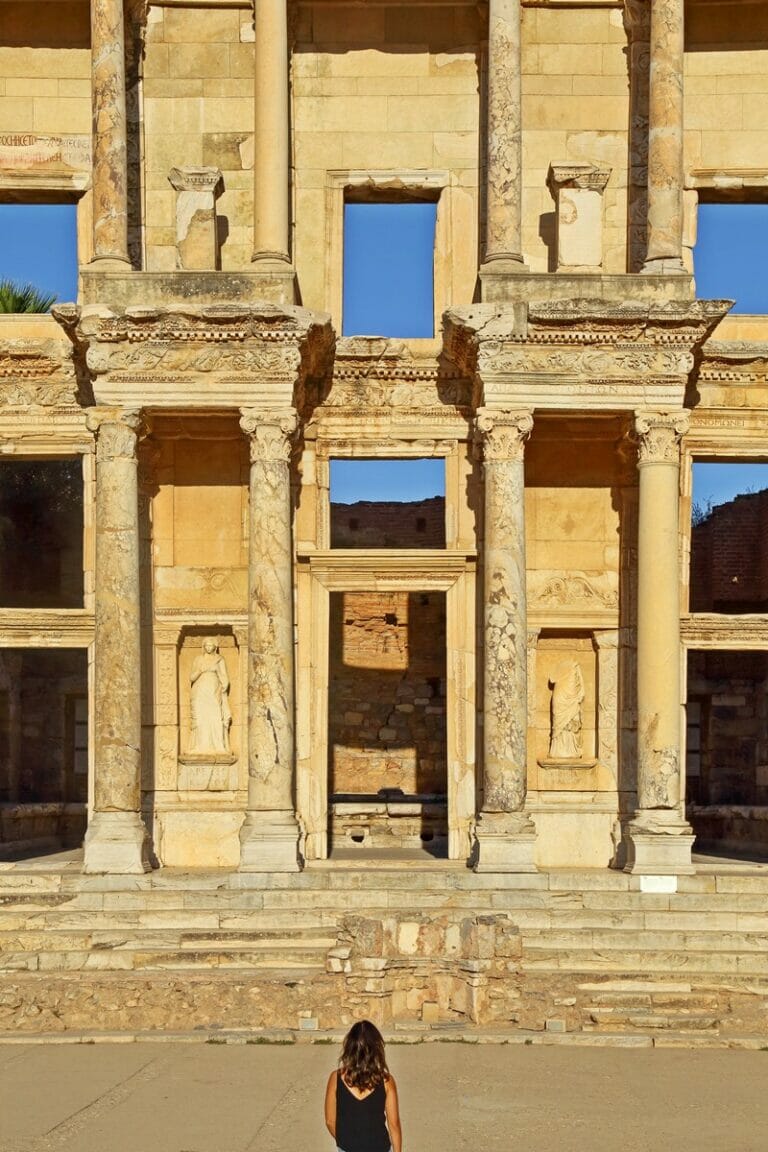
In many places in Turkey, including Ephesus and the ancient city of Tlos near Fethiye, we were one of the only tourists wandering through the sprawling grounds. Throughout Turkey we didn’t experience the same level of oppressive crowds as we have in places like the Acropolis in Athens, Wat Pho in Bangkok, the Golden Pavilion in Kyoto or the five towns of Cinque Terre in Italy.

However, the same simply can not be said of our time in Pamukkale. Unfortunately, the cotton castle in Pamukkale has entirely been overrun by busloads of daytrippers and visitors who head to the very small town to see the mineral-rich deposits cascading down the mountainside and to visit the ancient geothermal pool which Cleopatra herself is rumored to have swum in, now named “Cleopatra’s Pool”.
Conservation of Pamukkale and Hieropolis

According to the International Union for Conservation of Nature and Natural Resources which tracks the state of conservation of all natural World Heritage sites, “there is a need for better planning with regards to tourism management”.
The natural values of Hieropolis-Pamukkale, as well as its cultural attributes, caused a flood of tourists to visit the site which in turn stimulated the rapid growth of a tourist infrastructure. The diversion of spring water to feed hotel pools, pollution by sewage, mechanical damage to the stone and constant tourist bathing and littering in the pools diminished them and began to turn the travertine grey.
Moreover, the thermal water flow that feed travertine has decreased compared to previous times. The encroaching hotel development was therefore pushed back and the commercial use of water came under control. As a consequence the quality of the travertine deposit returned.
However, high tourist numbers are still an issue which requires careful management for which the current level of staffing is insufficient. There are some concerns about the clarity regarding the responsibilities of different authorities and lack of cooperation between them. There is an urgent need to establish a management unit with representatives from all relevant agencies. There may also be a need to revise the current management plan with integration of social, cultural, economic and natural values at larger landscape level.
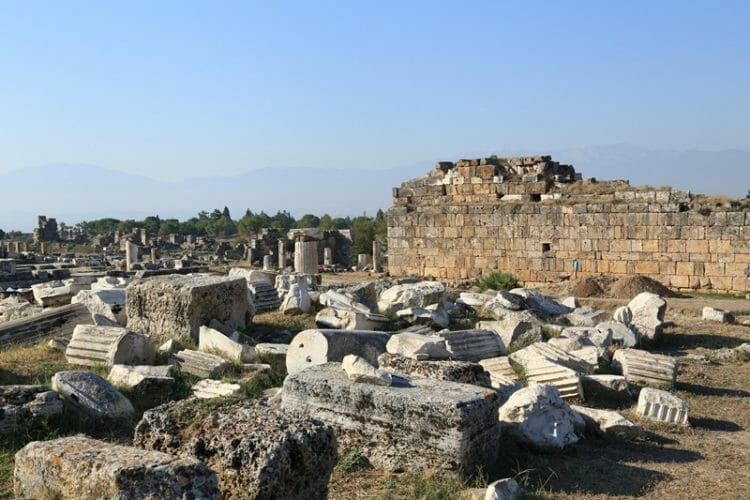
According to UNESCO, Pamukkale is legally protected through national conservation legislation, but there is no specific planning legislation to protect World Heritage properties. The responsibility for managing and conserving Pamukkale and ruins of Hieropolis is shared by the Ministry of Culture and Tourism plus the Ministry of Environment and Urbanism on the national level, together with the Denizli Provincial Special Administration and several state-level institutions on the local level.
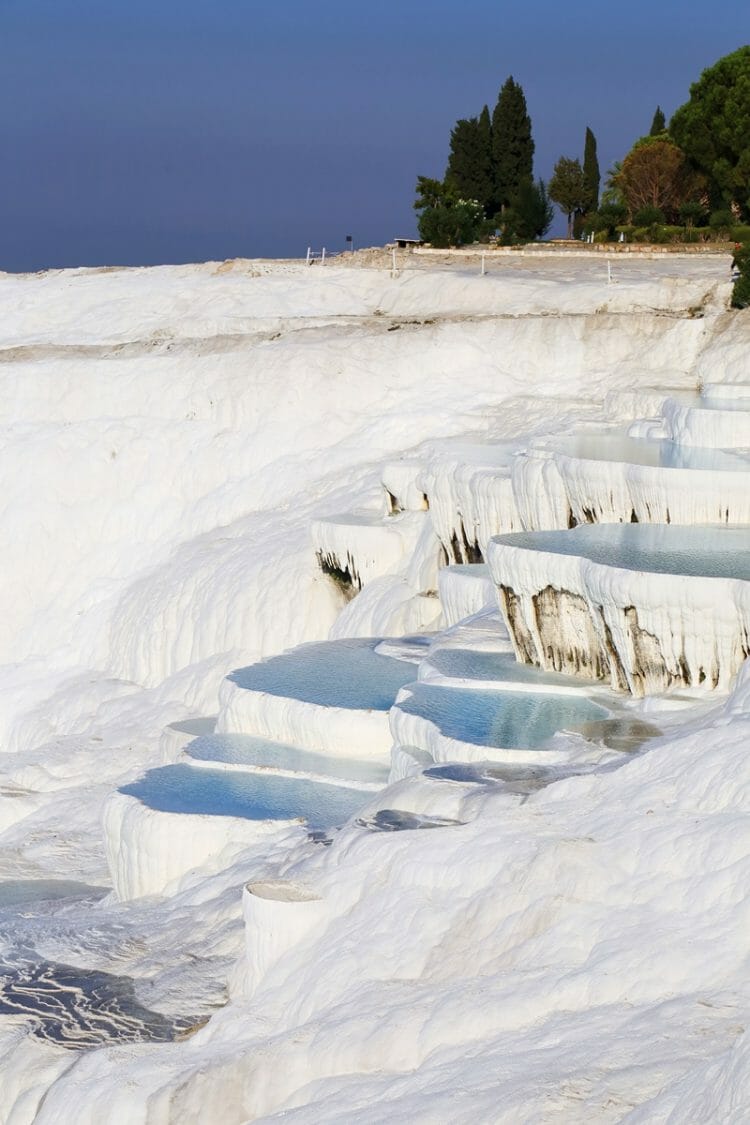
It’s not all gloom and doom, and the IUCN appears to be hopeful, rating Pamukkale’s conservation outlook as “Good with Some Concerns” in 2020.
The organization concludes that, “The main current threat to the site’s integrity is from tourism infrastructure development and high tourist numbers, as well as domestic sewage and pollution deposited by precipitation. Tourist numbers have been declining in the recent years, which has been compounded in 2020 by the COVID-19 outbreak, and threats from tourism infrastructure to spring water and natural assets have been reduced thanks to measures undertaken in line with the management plan.“
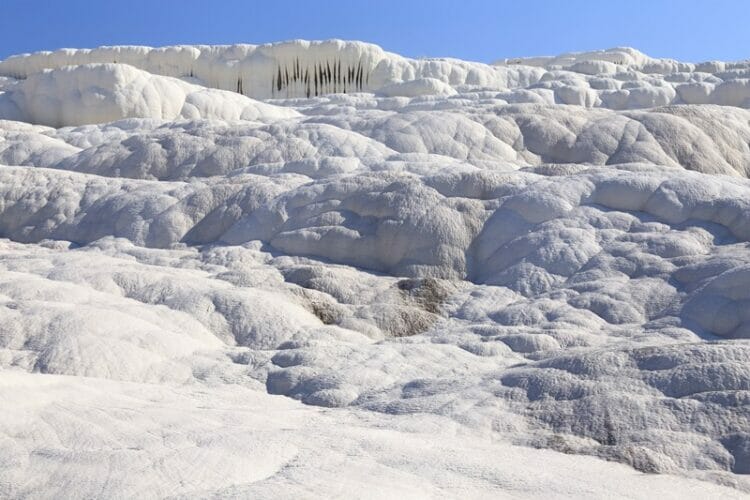
Among these measures include removal of hotel buildings and structures around the thermal pool; banning private vehicles from entering the site; closing the road through the southeastern travertine terraces; creating explicit visitor routes; restricting access to the travertine terraces in order to maintain the colour and structure as well as sustain the water flow; and establishing areas where visitors can bathe in the hot springs. Read on for more dos and don’ts at Pamukkale.
What can we do as visitors?
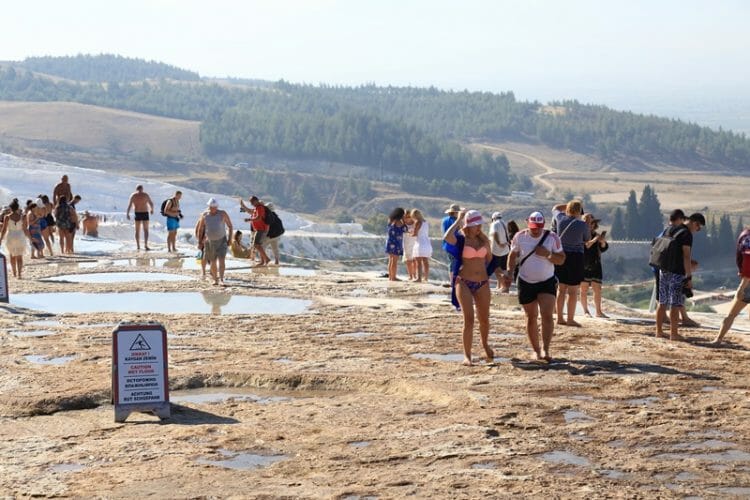
- Stick to the visitor path and don’t climb on the travertines – follow the rules!
- Leave no trace – take your trash away with you when you leave.
- Be respectful and follow directions from the staff.
- Bring a bag to carry your shoes in as you must walk barefoot across the Pamukkale travertine terraces.
- Don’t blast music and scream and shout when you’re visiting.
- While there is no specific Pamukkale dress code I still recommend that you dress appropriately – don’t walk between the various landmarks in your banana hammocks (speedos) and bikinis.
- Consider visiting during the off season or shoulder season to help distribute some of the tourist load. The weather in Pamukkale is fairly mild, and most visitors flock to Pamukkale during the peak season from April to about September/October.
- Stay overnight in Pamukkale and Denizli so that local businesses in the area receive some of your tourism dollars, rather than visiting Pamukkale as a day trip from Bodrum, Istanbul or Izmir.
- Skip the drone – while there might not be explicit rules forbidding the use of drones at Pamukkale and you might be able to get away with it, it would seriously hamper other visitors’ experience and cause damage to the travertines if you crash the drone.

Ultimately, visiting Pamukkale is a once-in-a-lifetime experience, and as long as we do our part and explore the delicate travertines conscientiously and responsibly, everyone can enjoy this natural wonder for generations to come.
Ready to plan your trip to Pamukkale? I recommend booking 1 nights’ stay at Bellamaritimo Hotel, a 3-5 minute walk from the travertines. Bellamaritimo is extremely basic but clean, and the rooms are spacious with air conditioning. There is free parking onsite if you are traveling around Turkey by car. Click here to see availability and current rates at Bellamaritimo Hotel, or head on over here for some other hotel options near the Pamukkale travertines.
Looking for more Pamukkale hotel options? Based on extensive research, I would also personally consider Venus Suite Hotel (a 15-minute walk from the Pamukkale ticket office or you can take their free town transfer service) and Hotel Pamukkale (a family-run hotel in the area that is highly rated for a short stay).
Need some help planning your Turkey itinerary? You might also find these articles helpful:
- First time visitor to Turkey? Read on for what not to do in Turkey and essential travel tips
- Spending some time in Istanbul? Here is my guide to spending 3 days in Istanbul
- Not sure where to go after Pamukkale? I recommend exploring the coastal town of Alacati
- The landscape diversity in Turkey is mind-blowing. Make sure you venture over to Cappadocia to explore the region
- Head on over here for an easy 2 week Turkey itinerary for first time visitors
- Or check out all of my Turkey travel tips and guides here
Pin this for later!
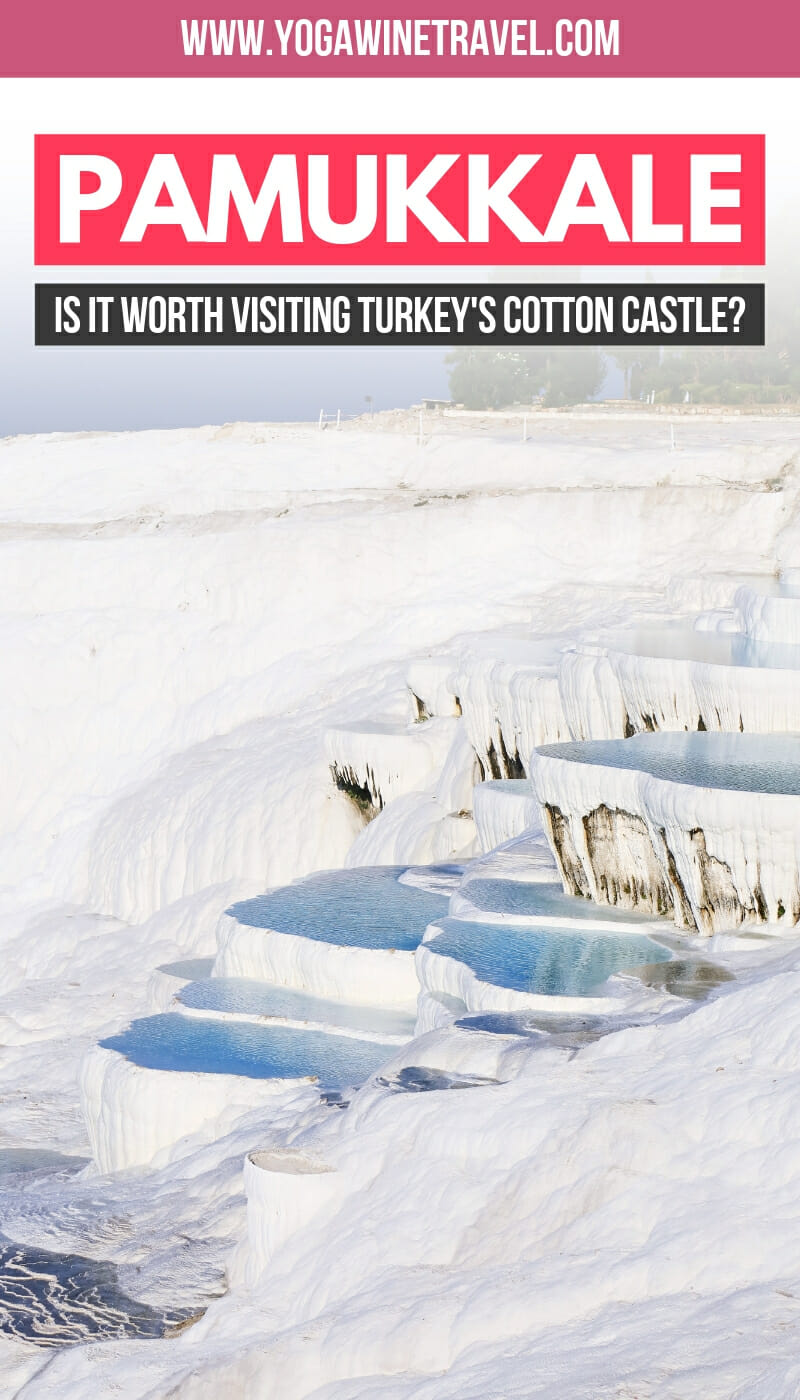
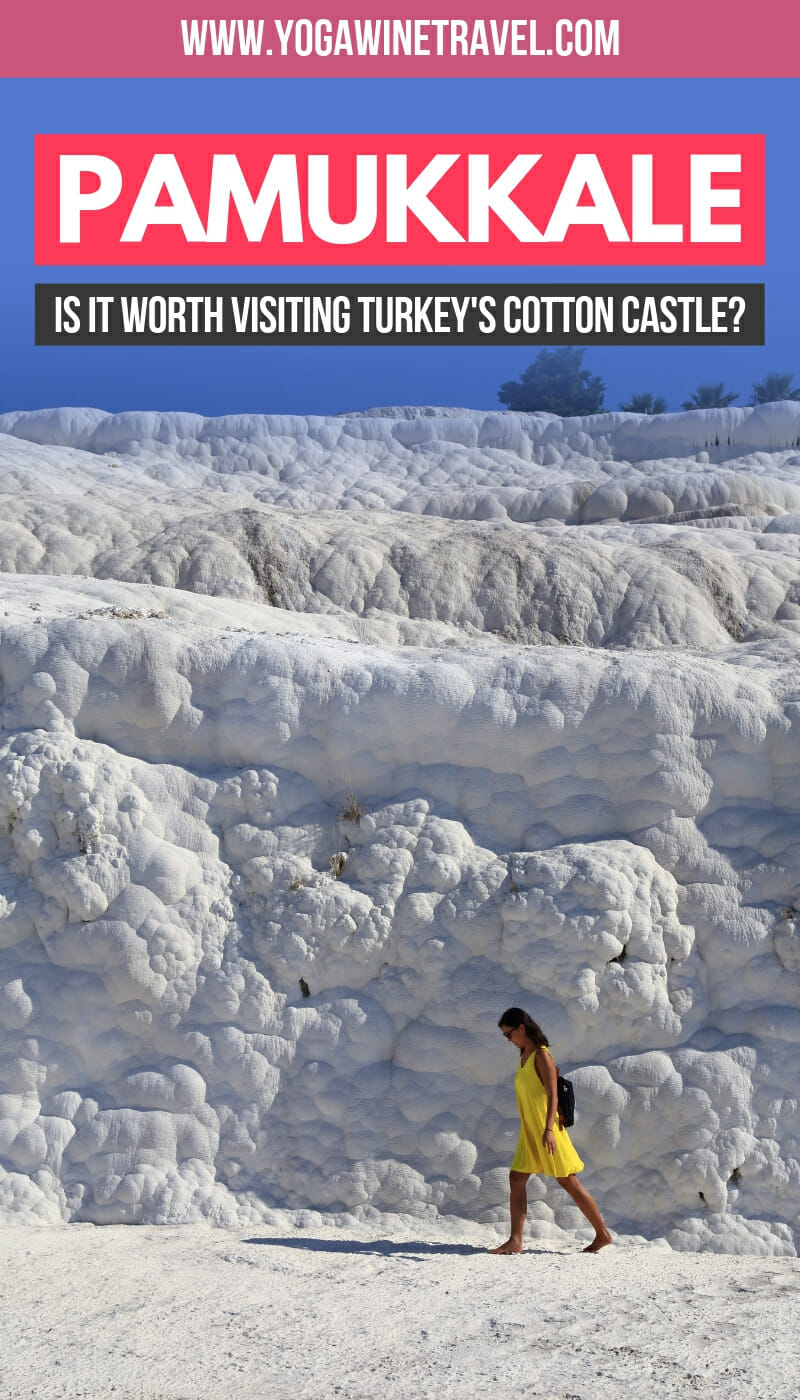
This article contains affiliate links. If you choose to book using these links, I will earn a small commission at no extra cost to you. Thank you for supporting my website by using these links!
Enjoyed reading this article? Subscribe to the mailing list!
* Unsubscribe at any time. Your e-mail address will only ever be used to send the occasional Yoga, Wine & Travel newsletter.



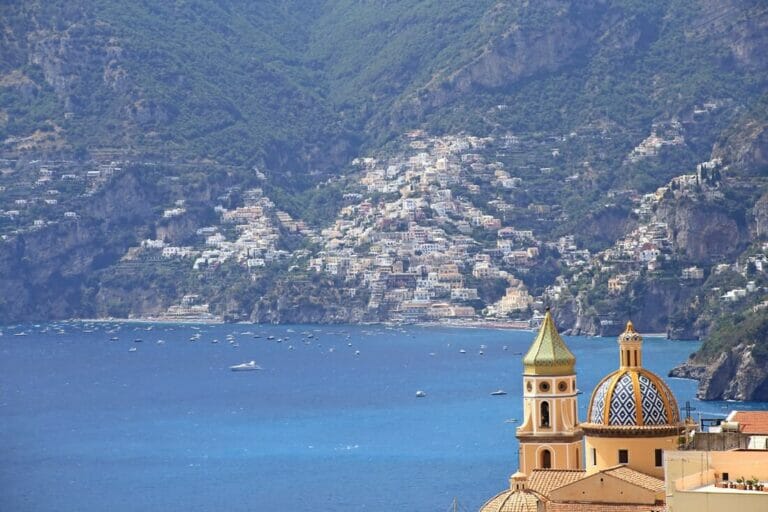
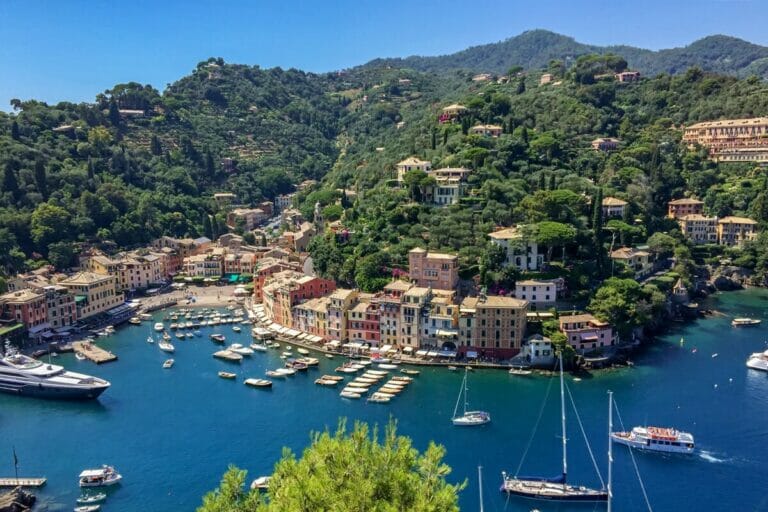
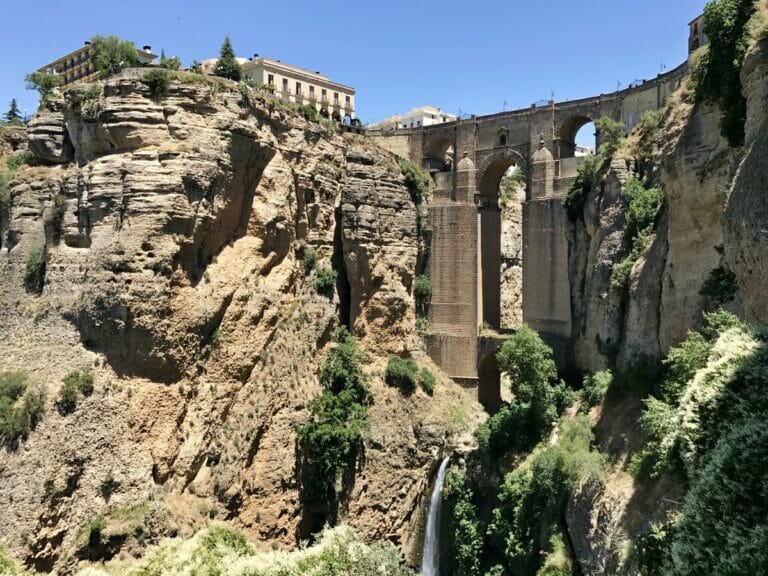
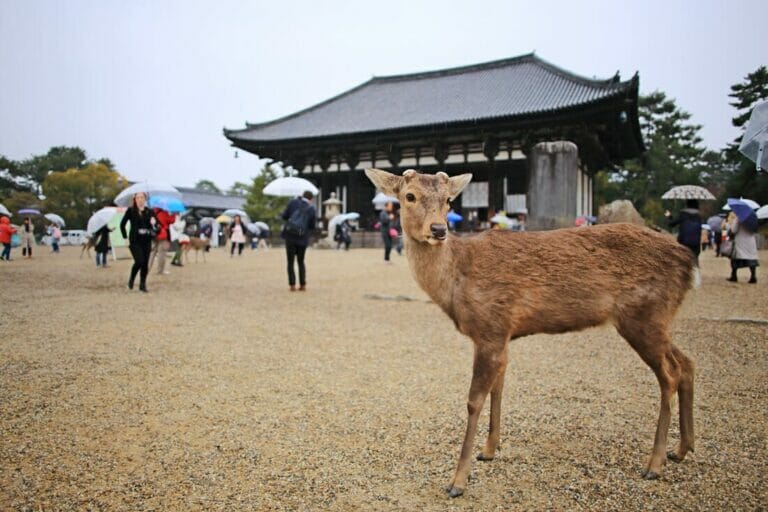


Thank you for your honest review. With everything to do in Turkey, I decided to skip Pamukkale. People have said that I should still go, but being that water is limited in these areas and that it’s being filled by man and it’s not natural. And the hoards of people. That would give me anxiety. Is it worth the almost three hour drive to dip my foot in it and get out? I would get out as soon as the people showed up. And really, if we are being honest, it’s because people just want a photo. Is it really to SEE the landmark? If I were them, I would do what they do for “The last supper” painting and have people buy tickets online in advance and only sell a certain amount. Though it’s greed, so they won’t do that.
Awesome and informative article. Thank you so much for this! I can’t wait to get to Pumakkale!!
Thanks for taking the time to read this. Safe travels!
Hi Flo! Thank you very much for such an extensional article! I find it really helpful since I am writing my bachelor thesis about natural preconditions for tourism in Turkey and there will be one chapter about Pamukkale itself.
Could you please tell me where exactly you got the information concerning the preservation of the site (UNESCO, IUCN and other authorities, etc.) so that I can have a look right at the sources and cite them (as reputable sources)?
Thank you very much beforehand!
Hi Michaela, glad you found this helpful. I actually linked to the sources within the article itself, but here are the links again:
https://worldheritageoutlook.iucn.org/explore-sites/wdpaid/478640
https://whc.unesco.org/en/list/485
Best of luck with your thesis.
I found the crowds acceptable, busy, but acceptable. So many people don’t bother to visit that incredible theatre, or walk through the ruins (I must admit that it was exhausting on a hot day). Interestingly, you mentioned no crowds at Ephesus. It was fine until the ship groups came through. Rude tour guides who get in the way while bellowing at their charges spoil it a bit. Fortunately they always rush on and leave it to the nerds like us, who poke along and discover stuff.
My main comment about Turkey is to tell everyone to GET THERE! We spent a month there. Every…single…day was incredible. We would wake up and think that surely this was the day that would be a let down. Didn’t happen. It has history, culture, natural beauty, quirky, glorious old cities, and lovely people. Wonderful place.
Totally agree with you – Turkey is spectacular! We are already planning our next trip back. Glad to hear that you had an amazing time!
Hi there, İstanbul is not the capital of Turkey. You have mentioned something like “the capital of İstanbul”, this can be misleading. The capital of Turkey is Ankara and İstanbul is a huge City, that is all.
Thanks for pointing that out, Pinar. It was an oversight on my part.
We are here and found this looking for more info of what to do. We are staying at the white haven hotel and so far we love it.
Super friendly and great family rooms.
I didn’t know how crowded this could be so crossing fingers we could enjoy the pools tomorrow.
We planned one night only but after I saw how many more places we could visit we re adding a second night as we are traveling with kids . After this we will continue to Kas.
Thank you for the detailed info . It helps a lot.
Hi Daniela,
Thank you for taking the time to read this article! Wishing you and your family a safe trip. If you are on your way to Kas you may also want to detour through Fethiye or make a pit stop at the Tlos ruins.
Enjoy!
Thank you for this detailed article. I too have been frustrated by the Instagrammers all jockeying for the perfect photo. I think its great advice to come in the off-season – thanks.
Hi Barry, thanks for your comment! While I’m all for people taking photos “for the ‘gram” (and many many people do it responsibly without breaking rules/trampling all over the place/ruining the experience for others), I think we all need to do better when it comes to visiting places like Pamukkale where the terrain is fragile and the immediate community is heavily reliant on tourism. Scenes like what I saw in Pamukkale really concerns me for future generations of travelers who also deserve to see this magical place unspoiled.